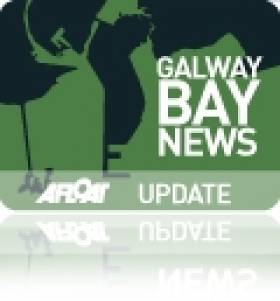Displaying items by tag: Deo Volente
Historic Cargo Delivered for Galway’s Grand Finale
#VESSEL VOLVO VILLAGE – Following yesterday's historic arrival of the Deo Volente, the first container ship to be unloaded in Galway Harbour which took six hours to complete concluded the delivery of logistics for the Volvo Ocean Race Grand Finale, writes Jehan Ashmore.
The cargo of containers packed with the spectator stand for the prestigious events 'Pop-Up' Village had travelled from Lisbon. But before any of this could be done the heavy-lift cargoship had to enter through the Galway's port dock gates. This was followed with the vessel making manoeuvres in the confines of the tidal basin of Dun Aengus Dock. It was a tight squeeze as the 105m long vessel edged closer to the berth in the basin which was witnessed by onlookers lining the quays.
The vessels cargo was almost the entire race village which is a travelling show that traverses the globe as part of the Volvo Ocean Race 2011-2012. It provided a "new challenge for Galway Harbour in handling containers" said Harbour Master Captain Brian Sheridan and I am delighted that the operation went better than anticipated.
After overnighting in the port, Deo Volente sailed this morning en-route to Rotterdam to pick up a cargo bound for the St. Lawrence Seaway. Currently the vessel is underway off the south-west coast.
























































